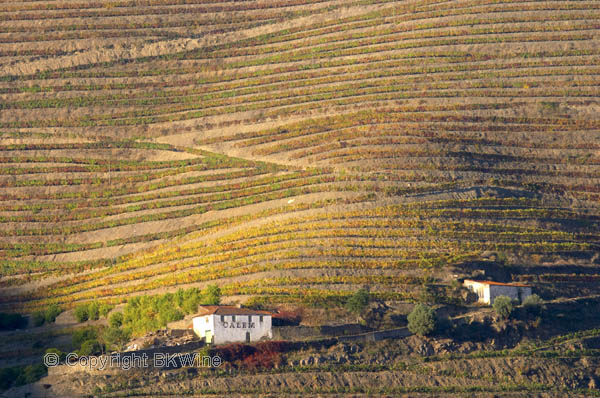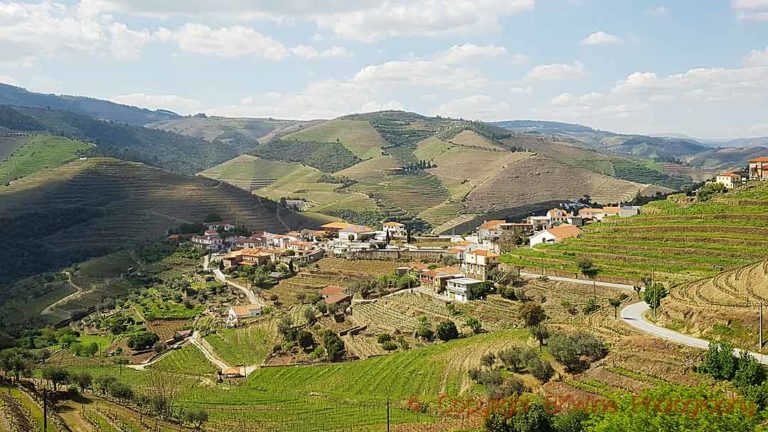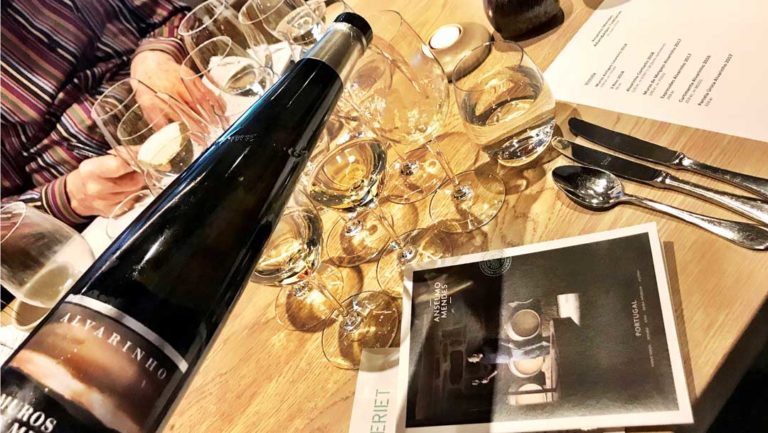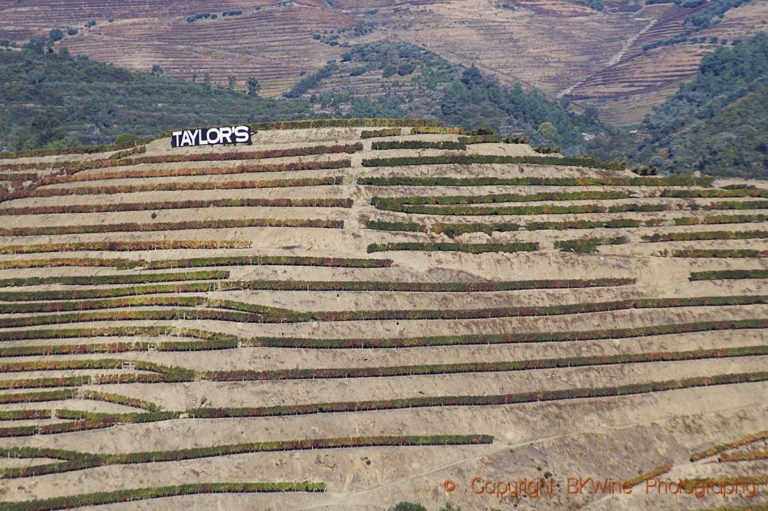The port wine producer Calem dates back to mid-1850s. Today, like many other port producers, it is part of a group together with several other famous names. It has a wide range of ports, from young ruby to very old tawny. We had the opportunity to taste a number of their wines back to a tawny 1961, together with Sónia Figueira, export manager of Calem. BKWine’s Carl-Erik Kanne reports.
There is all about perfection if you are believe Antonio Alves Calem who in 1859 founded the Port wine house Calem in Porto / Vila Nova da Gaia.
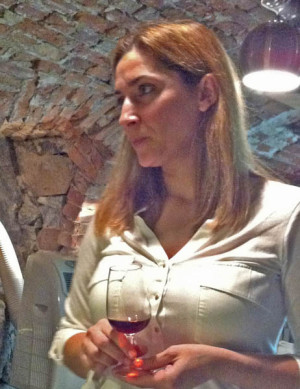
In order to judge the veracity of this old statement it was with great interest I went to a tasting of the Calems wines. I had an appointment with Sónia Figueira, export manager of Calem.
Calem is part of the Sogevinus Group since a number of years, which also includes the famous brands Kopke, Burmester and Barros. The group also owns some vineyards, Quinta S.Luiz with about 125 ha in central Douro and Quinta da Arnozelo with some 200 ha in the more prestigious and difficult to access Douro Superior. Here they also grow olives and other crop on the steep slopes of the river. The grapes for the Calem wines come from Arnozelo.
The company logo symbolizes that during the 1800s they exported their wines, mainly to Brazil, on their own ships.
It is interesting to note, from a historical point of view, that the Douro wine region was classified as early as the 1750s by the Marquis of Pombal who had been commissioned to improve the quality of wines from the Douro.
Another personality with great importance for the quality of Douro wines was JJ Forrester, who in the mid-1800s mapped the entire Douro Valley meticulously to analyse the different conditions that the vineyard and different locations had. You could say that he was a thorough man of terroir and a big proponent of “natural” (non-fortified) wines. Ironically his countrymen preferred to a greater extent the fortified wines.
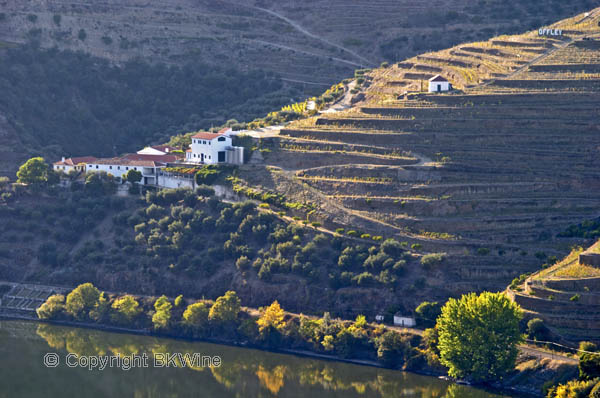
Douro covers 250,000 ha of which only 41,000 ha are planted with vines. The main reason is the rugged terrain with very steep slopes down to the river that require extensive terracing and manual vineyard work.
The region is divided into 3 areas where Baixo Corgo (about 14,000 ha of vineyards) is located in the far west, that is closest to Porto and the coast. Next, upstream, is Cima Corgo (about 18,000 ha of vineyards). Closest to the Spanish border is the area’s largest sub-region, the Douro Superior (about 9,000 ha vineyards).
The climate is a typical inland climate, and becomes hotter and drier the farther east you go. Winters are cold and summers are extremely hot, with big differences between night and day. This greatly improves the grapes’ suitability for quality wines since the important acidity is not overwhelmed by too much ripe fruit.
The soil is largely composed of slate and granite.
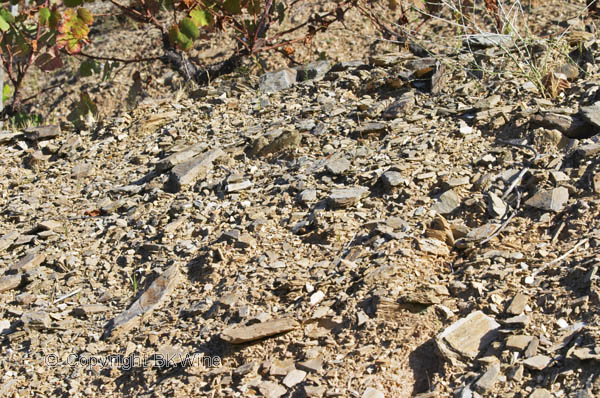
In the port region producers are allowed to use a variety of grapes, the vast majority indigenous, with certain restrictions. The most common are Tinta Barroca, Tinta Cao, Touriga Nacional, Tinta Roriz (tempranillo), touriga franca, and tinta amarelas.
Also worth knowing of the history of the Douro wines is that the spirits added as “fortification” was in the 16th and 17th centuries done largely for reasons of hygiene and at that time the spirit was mostly added to the wines that had finished fermenting, ie dry wines.
It was not until the 1820s that people started using the method of terminating the fermentation by adding alcohol to get sweetness left in the wine. And it was not until the 1850s that this method became more widespread and can be seen as the forerunner of the modern port wines we see today.
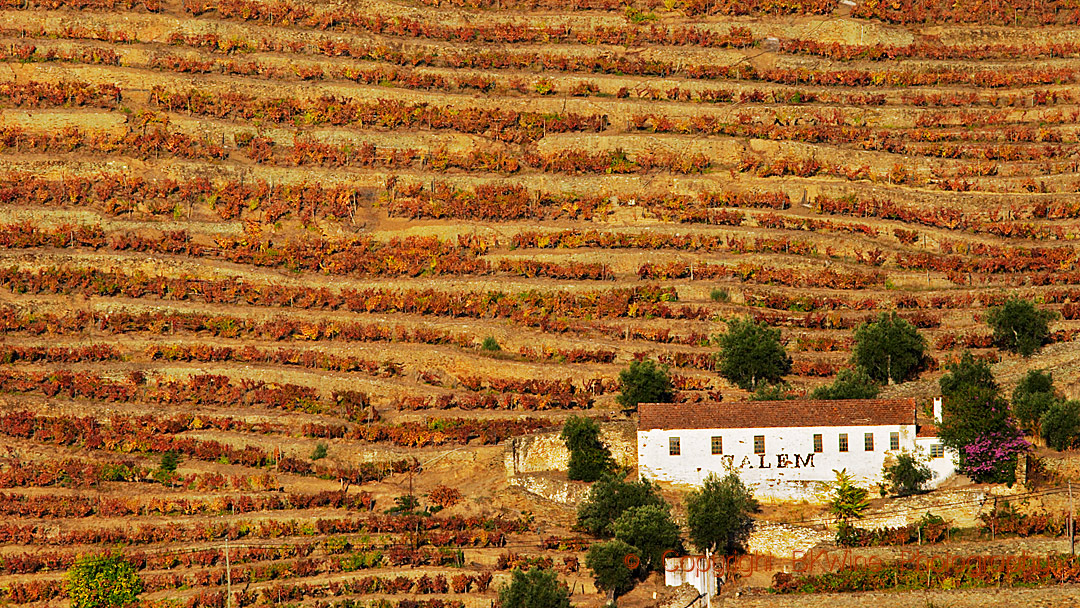
Today the Port Wine Institute (IVDP) regulates and rigorously controls all the port wine production. And the Casa do Douro controls all the growing of the grapes for port wine in the Douro and the classification and registration of the vineyards in the so called “beneficio” system.
These organizations also collaborate with the Port Wine Shippers Association that controls the trade in port wine. It is not easy for newcomers to get an entry!
A peculiar feature of port wine production is that grapes are “pressed” (or more accurately crushed) through foot treading in large open vats, called lagares. This is considered the most effective and gentle form of pressing, because it avoids getting crushing the pips. Maceration takes place over a few days on the skins to extract as much as possible of the flavour and colour. After fermentation to a certain level alcohol is added. (Editor’s note: Today it is common with both foot treading and mechanical treading.)
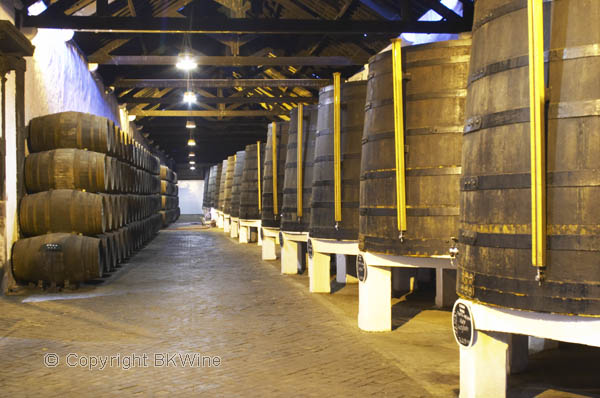
Whatever the subsequent aging method, the first two years are always in barrel. Thereafter it depend on the type of port wine how the aging is done. It can be bottle aging or aging in wood. A rough overview of the types of (red) port wines:
- Wood aged:
- Tawny: aged in oak barrels of 600 litres
- Ruby and late bottled vintage (LBV): aged in large oak vats (sometimes over 20,000 litres)
- Bottle aged:
- Vintage, with only two years in barrel and then in bottle
(Not included here: white and rosé port wines. The latter is generally kept in steel tank and the whites follow largely the same principle as tawny.)
Worth noting here is that tawny has much more contact with the barrel and with oxygen and thus develop faster than the reds in the large vats or than vintage ports in bottle.
Most port wines are blends of different vintages except colheita, vintage and LBV. Late bottled vintage have first matured a few years in large barrels and then been bottled for further aging.
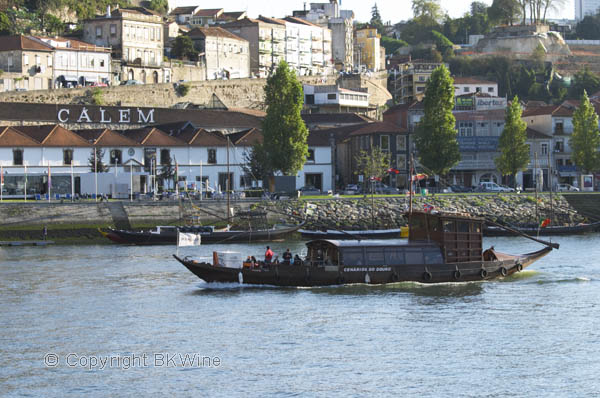
Tawny reservas are generally aged on the same type of large oak vats as ruby reserva and is made from wine of between 5 and 7 years of age, while the tawnies that have an age indication (10 years, 20 years, etc.) are often aged in so-called pipes (port wine barrels) of 550 litres. The age indication refers to the average age of the wines if included.
The characteristics of tawnies differ from the other types, not only in colour but also in aroma and flavour. They are generally softer, and have more complex aromas with hints of nuts, spices, figs, etc. This also means that the different types of port go with different types of food.
The wines that do not develop in bottle usually have a cork with a wooden plate on top which one can open just by turning it. These wines can therefore be stored upright because the closure does not need protection from dehydration.
The wines aged in bottle should be decanted before serving. Especially vintage ports of some age may contain a lot of deposit.
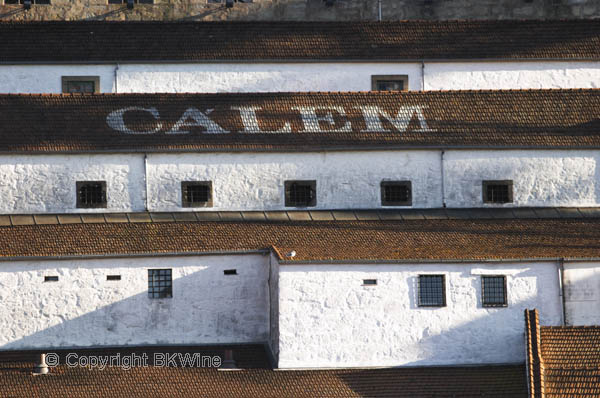
Tasting the Calem wines, food and wine matching
After this introduction to port, it is time to move on to the five wines tasted. We also tried them with some types of food: blue cheese, gingerbread, dates, and walnuts.
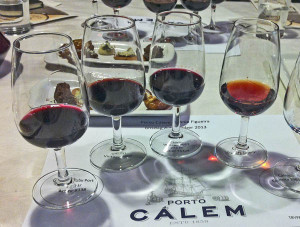
Calem Ruby Port: deep dark red colour with young edges, good fruit and acidity and balanced sweetness, a little almond scent and a pleasant aftertaste. Went well with the stilton cheese. (30 % tinta roriz, 30 % tinta barroca, 20 % tinta cão, 20 % touriga franca)
Calem Vintage 2002: dark red colour and raisins on the nose, well integrated fruit and acidity and a complex long finish. Went well with the cheese and the chocolate truffle.
Calem Vintage 2011: a real stunner with sweet fruit aromas with notes of raisins and dates; flavour of dense fruit and a silky soft acidity that lingered long in the mouth. This wine has received 93-95 points from Parker and will continue to develop for at least 40 years.
Vintage wines from 2011 are considered the best wines ever made in the Douro and both Parker and Jancis Robinson are lyrical in their descriptions of the different wines. Calem’s Vintage 2011 is a bargain (less than 30 euros in Sweden) and very good Christmas present or gift for the new-born child or grandchild to be opened on their 40th or 50th anniversaries!
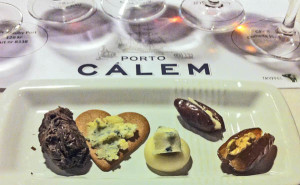
Calem 10 years tawny: A completely different type of wine, amber with an aroma of raisins and nuts and some caramel sweetness. Goes less well with the cheese and truffle, but is excellent with gingerbread and the dates. Just perfect for a crème caramel, which also happens to be a very popular dessert in Portugal. Tawny wines also happens to be more popular in Portugal than the ruby / vintage versions. The is particularly true for the tawnies with a specific vintage indication, so called colheitas. And thus:
Calem Colheita 1961: In glass number five Sonia eventually poured a Calem Colheita 1961 bottled in 2013 and after 52 years in the barrel. Fantastic light amber wine with ripe aromas of raisins and figs. The taste was very fresh with a pleasant caramel sweetness and a long, complex finish. This wine you can without a problem drink on its own in small sips, even without any food. A very elegant colheita 1961!
Perfection? Yes, something like that!
The tasting was arranged by Tryffelsvinet, a Swedish wine importer. Andreas Blomquist and Sanna Bronell from Tryffelsvinet welcomed us together with Sónia Figueira, export manager at Sogevinus, who led the tasting of the Càlem wines.
Editor’s addition: By pure coincidence, we happened to uncork a Calem vintage 1975 yesterday: a port with good maturity without being in any way over-mature. Surprisingly dry in style (compared with a tawny and a colheita we also drank it almost felt barely semi-sweet), good fruit, some raisins, quite discreet on the nose, surprisingly light and quite elegant. Can perhaps be interesting to keep an opened bottle for a few days to see if the aromas develop a bit more with some added oxygenation?
Carl-Erik Kanne is a long time wine enthusiast and fervent wine taster. He reports from wine tastings and wine events in Stockholm for BKWine Magazine.
[box type=”info” style=”rounded” border=”full”]
There are many good and great wines to discover in the Douro Valley, both the sweet port wines and “regular” table wines. Both the port and table wines will be plentiful, at tastings and at gourmet meals, along with Portuguese food on a wine tour to the Douro Valley with BKWine. Book now!
Travel to wine regions with the experts on wine and with the specialist on wine travel.
[/box]
